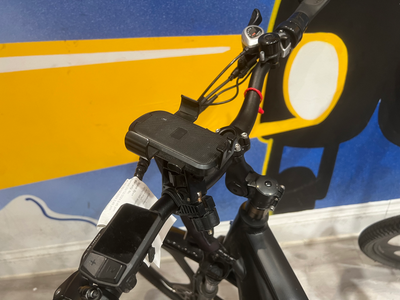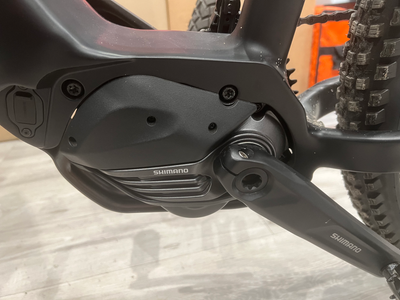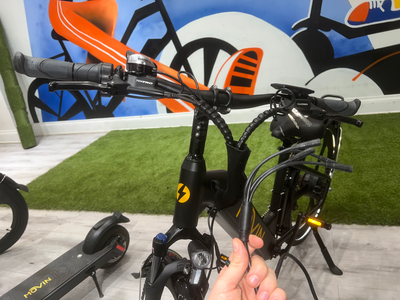Why Your E-Bike’s Suspension Isn’t Just About Smooth Rides?
Let’s get real—nobody wants their teeth rattled loose on a bumpy trail. But good suspension on an e-bike isn’t just about comfort (though that’s a big perk)*. The right setup doesn’t just cushion your ride—it keeps you in control, saves your bike’s guts from getting hammered, and even helps your battery last longer. Here’s the lowdown on why it matters and how to pick what works for you.
* In its models, Movin' Ebikes uses suspensions from famous brands RST and Suntour. Which model exactly, you can see in the bike specifications.
The Unsung Hero of E-Bikes: Your Suspension
Think of your suspension electric bike as a partner, not just a tool. That fancy shock system? It’s doing way more than softening potholes:
- It eats impacts for breakfast. Rough terrain jolts your frame, motor, and battery—good suspension takes the hit so your bike doesn’t.
- It’s a traction ninja. Ever fishtailed on loose gravel? Proper suspension keeps tires glued to the ground, so you don’t waste battery power spinning wheels mid-climb.
- It fights fatigue. Less bouncing means you’re not white-knuckling the handlebars for dear life. Translation: you ride longer, explore further.
And if you’re rocking a full suspension e bike, this stuff is non-negotiable. Rough trails can turn into component killers, but a dialed-in suspension acts like a bodyguard for your bike’s electronics. It even stops your motor from guzzling extra juice when wheels lose grip—saving battery for the fun parts.
Suspension Types: What Actually Works for You?
1. Front Suspension (Hardtail)
- Who’s it for? Commuters, weekend trail explorers, or anyone who hates maintenance.
- Why it rocks: It’s lighter on your wallet (and your bike’s weight). The front fork soaks up bumps while the rigid rear keeps things simple. Perfect if you’re mixing pavement with light dirt paths.
2. Full Suspension E-Bikes
- Who’s it for? Trail addicts, downhill daredevils, or anyone riding where the ground looks like a toddler’s building blocks.
- Why it’s a beast: Front fork + rear shock = no mercy for rocks, roots, or drop-offs. You’ll float over obstacles that’d buck a hardtail rider into next week. Plus, better traction means your motor works smarter, not harder.
Still unsure? Ask yourself: Do I mostly ride smooth trails or paved paths? Go hardtail. But if your idea of fun involves technical descents or backcountry adventures, full suspension electric bicycles are worth every penny. Your spine (and your bike’s battery) will thank you.
Air vs. Coil Suspension: Key Differences
Air Suspension
- Weight: Lighter, ideal for climbing and cross-country suspension e bikes.
- Adjustability: Easily tune air pressure to match rider weight or terrain.
- Progressiveness: Stiffens under compression, preventing bottom-outs on big drops.
- Maintenance: Requires regular air pressure checks and seal inspections.
Coil Suspension
- Durability: Fewer moving parts mean less upkeep. Perfect for aggressive riders.
- Sensitivity: Provides a plush, responsive feel on small bumps.
- Linearity: Consistent force throughout travel, favored for downhill stability.
- Weight: Heavier springs may affect efficiency on uphill e-bike rides.
Which to Choose?
- Air: Prioritize weight savings and adjustability. Ideal for mixed-terrain electric bikes with suspension.
- Coil: Seek durability and smooth performance on technical descents.
Choosing the Right Suspension for Your E-Bike
1. Assess Your Terrain:
- Full suspension e bikes shine on rocky, root-filled trails.
- Hardtails suffice for light trails or paved paths.
2. Consider Travel Needs:
- 100–120mm: Efficient for cross-country.
- 150–200mm: Essential for downhill and enduro.
3. Adjustability: Look for rebound damping and lockout features to optimize battery efficiency on flats.
4. Rider Weight: Air systems adjust easily; coil requires spring swaps for heavier riders.
Maintaining Your E-Bike Suspension
1. Clean Regularly: Wipe stanchions after muddy rides to prevent seal damage.
2. Lubricate Seals: Use suspension-specific oils monthly.
3. Check Sag: For e bike suspension, sag should be 20–30% of total travel. Adjust air pressure or springs accordingly.
4. Service Intervals: Rebuild air shocks annually; coil shocks every 2–3 years.
Upgrade Your Ride: Essential Suspension Tips
- Lockout Feature: Save battery on smooth roads by stiffening the suspension.
- Tubeless Tires: Pair with suspension for pinch-flat protection.
- Protective Films: Prevent scratches on stanchions from debris.
Whether you’re navigating city streets or mountain trails, the right suspension electric bike balances efficiency and comfort. Full suspension e bikes offer unmatched control on rough terrain, while air systems provide versatility for varied rides. Test different setups, prioritize maintenance, and always match your suspension to the terrain you ride most.
Ready to explore? Visit us at 654 College Street, Toronto, to experience premium suspension systems designed for real-world performance. Let’s find the perfect fit for your ride.




